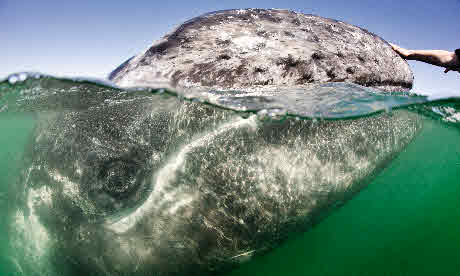
If the BBC's Planet Earth Live has piqued your curiosity and you'd like to see the real stars of the show, then read on to discover how you can.
American black bears are found only in North America and are smaller than their grizzly cousins, standing just two-three feet high on all fours. Enjoying a forested habitat as far south as Florida and as far north as Alaska and Canada, the black bears are thought to number around 750,000.
The BBC filmed in Ely Minnesota, a brilliant place to base your black bear trip. A visit to the Vince Shute Wildlife Sanctuary is a great way to see the bears in their natural habitat from a raised viewing platform. The Sanctuary also offers photography courses, which take place on site, for more information click here. For a more in depth photographic excursion join pioneering bear behaviourist Dr Steve Stringham in an Alaskan up-close adventure. Back in Minnesota, the Wildlife Research Institute in Ely runs courses in bear study with the opportunity to spend time with bears and learn about their behaviour, although unfortunately these are booked up for this summer.
To get you in the mood, read our two-part interview with BBC black bear cameraman Gordon Buchanan, part two can be found here, or take inspiration from this tale of canoeing in Minnesota's Boundary Waters.
Flights from the UK to Minneapolis Saint Paul International Airport make a stop in Chicago O'Hare International Airport.
The Masai Mara game reserve, located in south-west Kenya, is well known for its large population of big cats and other wildlife. If the BBC's lion pride coverage inspired you to make a trip then you won't be short of options when booking your safari since numerous companies visit the region.
The BBC crew is based at Governor's Camp on the banks of the Mara River. Famous for being the home of “Big Cat Diary,” as well as a superb tented camp, you are guaranteed to see members of the Marsh Pride.
For more information click here or read about Lyn Hughes' own stay at Governor's Camp. Also worth a read is Julie Davidson's Bushman's Holiday. Keen photographers should take a look at Chris Haslam's advice for snapping the perfect shot on safari in Kenya.
The BBC track the grey whale migration up the Pacific coast of North America from the Mexican lagoons where their calves are born, to the feeding ground of the Bering Sea between Alaska and Russia.
Grey whales make the journey there and back every year, taking about two months in each direction. This means that there are plenty of opportunities to catch a glimpse of the leviathans and their young at various locations along the coastline. Our article on the 10 best spots for whale watching is a great place to start your research. Mark Carwardine’s five ultimate wildlife experiences gives information on catching the friendly giants in Baja California, the best place to whale watch in the world, he says. For those wanting a bit more structure to their whale watching, numerous companies offer trips all along the coast. Or, if you can bear to wait a year or two, sign up for one of the very popular places on one of the trips that Mark Carwardine leads in Baja, for more information click here.
And, if you visit this year, you might be in for a treat following the announcement of record numbers of grey whale calves in Mexico's lagoons.
Become a “friend” and you'll be able to visit once a year and even help out with research. Other options include day visits and volunteer residencies, click here for more information on the project. Of course, this isn't the only place you can see meerkats. The friendly little creatures can be found in parts of South Africa, Botswana, Angola and Namibia and several tour operators run specific meerkat trips.
Julia Bradbury talks to Wanderlust about Planet Earth Live | Interviews... More
Not a fan of Planet Earth Live? Read Paul Goldstein's blog | Blogs... More